Conservation
Monthly Archive: December Cons
The Rules of Taxonomy: How Species Are Named
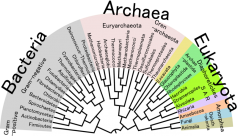
Why should ROM curators care about a proposal to create an organization that would make rules for how species of living things are named?
In Hot Water – the Ongoing Debate on Bottled Water Extraction in Ontario
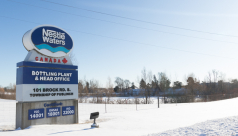
In the quiet countryside of the county of Wellington, echoes from a clash between the local community and mega-corporation Nestlé still linger in the air. Starting in 2015, the debate over Nestlé’s water extraction in Aberfoyle and Elora sparked outcry from community members and organizations that got the attention of the province (and indeed the international community). It is time to take a look at what has happened since, and what both Nestlé and anti-water bottling organizations have to say about it, for the battle is far from over.
When Things Go Wrong for Right Whales
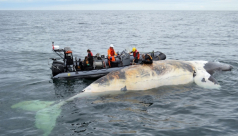
Guest blog written by Environmental Visual Communication student Viridiana Jimenez
The death of seventeen right whales in 2017 represents a loss of over 3% of the population. The significance of this loss has sent the scientific community into a panic. Their deaths were primarily caused by ship collisions or entanglements with fishing gear. As frequent visitors to the Gulf of St. Lawrence, we must now work together to save this species from extinction.
Trees for Life in Lakefield
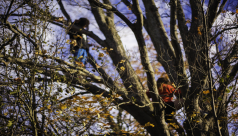
Guest blog written by Environmental Visual Communication student Fenella Hood
When Rebecca Rose left her home in Leslieville and moved her three young children to the quaint village of Lakefield, she felt secure in the belief that she was improving their lot in life. Then one day a notice was slipped through her door from the Township of Selwyn announcing her next-door neighbour's severance application to build a second house and increase his selling power. His small corner lot boasts a stand of seven mature trees that will need to be cut down to make room for the build. “It felt like being kicked in the stomach. I don't want those trees to die, and I don't want to tell my kids.”
Make Plastic Reduction Part of Your 2018 New Year's Resolutions
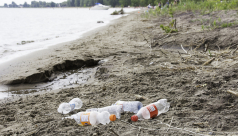
Guest blog written by 2017 Environmental Visual Communication student Cristina Bergman
Every year, 10,000 tonnes of plastic enters the Great Lakes. Imagine 55 jumbo jets of plastic crash landing in the lakes each year. In this province alone, 3 billion plastic bottles are sold annually, but only half are recycled. The other 1.5 billion bottles end up in landfills or littering the environment. As the only province that borders the Great Lakes, Ontario has an obligation to protect this vast, irreplaceable resource. But is the province stepping up?
The Captivity Debate: Should We Keep Marine Mammals in Tanks?
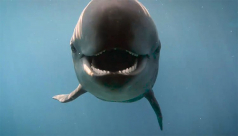
Guest blog written by Environmental Visual Communication student Adil Darvesh
In November 2016, Qila and Aurora, two Beluga whales at Vancouver Aquarium, died due to an unknown toxin in their tanks. News of their deaths added to an ongoing debate: Should humans keep marine mammals in captivity for the sake of education and entertainment? Read this blog to learn more about the heated discussion.
Singing the Blues: The Mystery of B105
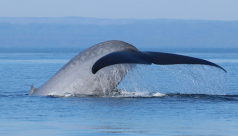
Guest blog written by 2017 Environmental Visual Communication student Viridiana Jimenez
The ocean’s largest and most iconic animal, the blue whale, can produce sounds that cross entire oceans and can be heard from one end of the planet to the other. With humans’ increased presence in the oceans, how are these charismatic giants affected by—and adapting to—our noisy activities? In this blog we follow the story of a single whale, B105 “Invasor”, and muse on how it may have changed its ways to contend with our cacophony.
The Journey of the Lost Water Bottle

Guest blog written by 2017 Environmental Visual Communication student Cristina Bergman
I will travel the ocean for hundreds of years. I will see more wildlife and more extinction in my lifetime than any human that has ever walked the earth. I fit in your hand, but can be more powerful than a blue whale. I am a plastic water bottle and this is my story.
Who sings for blues? How Blue Whales became ingredients in everyday products
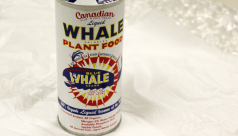
Living in Ontario, the Blue Whale in the vast ocean may seem a distant thought from our daily lives. But our history with these animals is more intertwined than we realize - for example, would you ever use fertilizer in your garden made from blue whales? Canadians used to! Read this guest blog post by ROM Biodiversity / Blue Whale team member Katherine Ing to find out a bit more about the other ways whale products became a part of everyday life during the peak of industrial whaling, and what that means for modern global whale conservation.
The TRCA Calls Upon Batman for Help
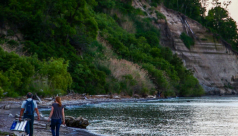
It’s been a hot summer, the sun is shining and the Scarborough Bluffs are standing tall above the Lake Ontario shoreline. But they might not be for long. The Scarborough Bluffs in Toronto’s east end are eroding at a rapid rate, increasing the likelihood of slope failure and damage to local species’ habitats. Although the cliffs have been eroding since the 1940s, the view from atop the Bluffs was too enticing to prevent people from further settling there. As houses were feverishly built along the Bluffs, the rate of erosion further accelerated.
